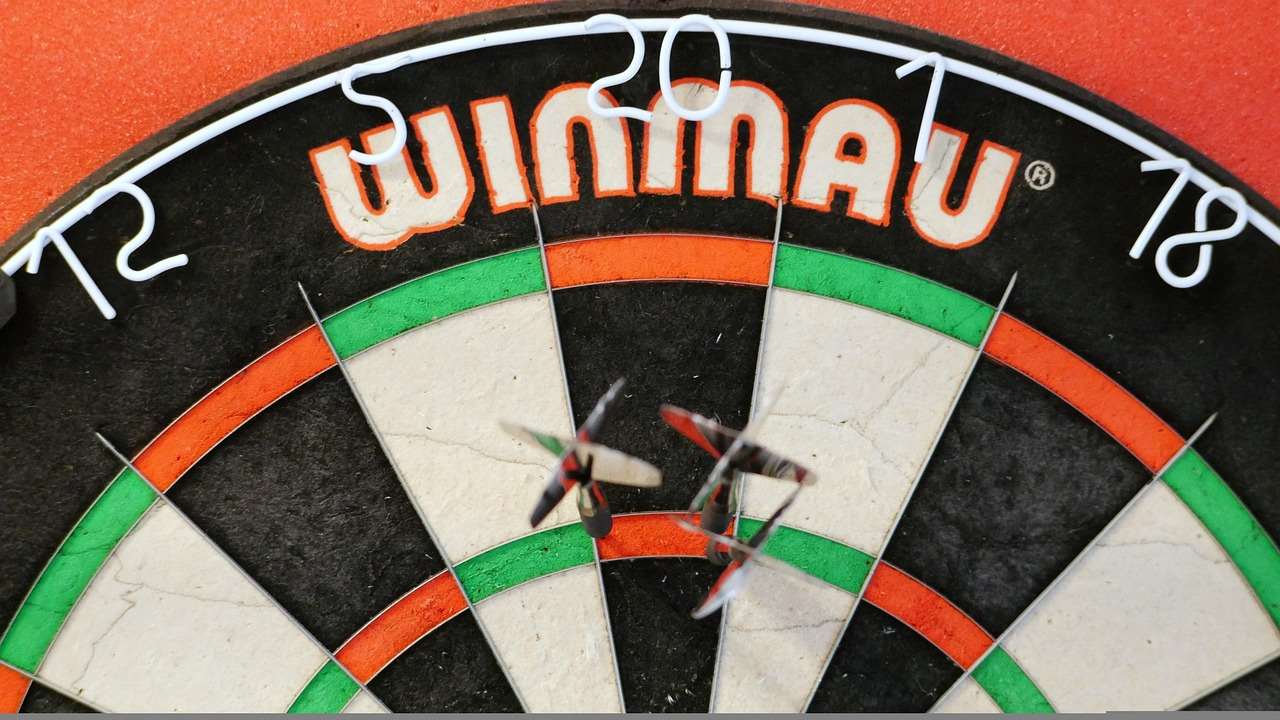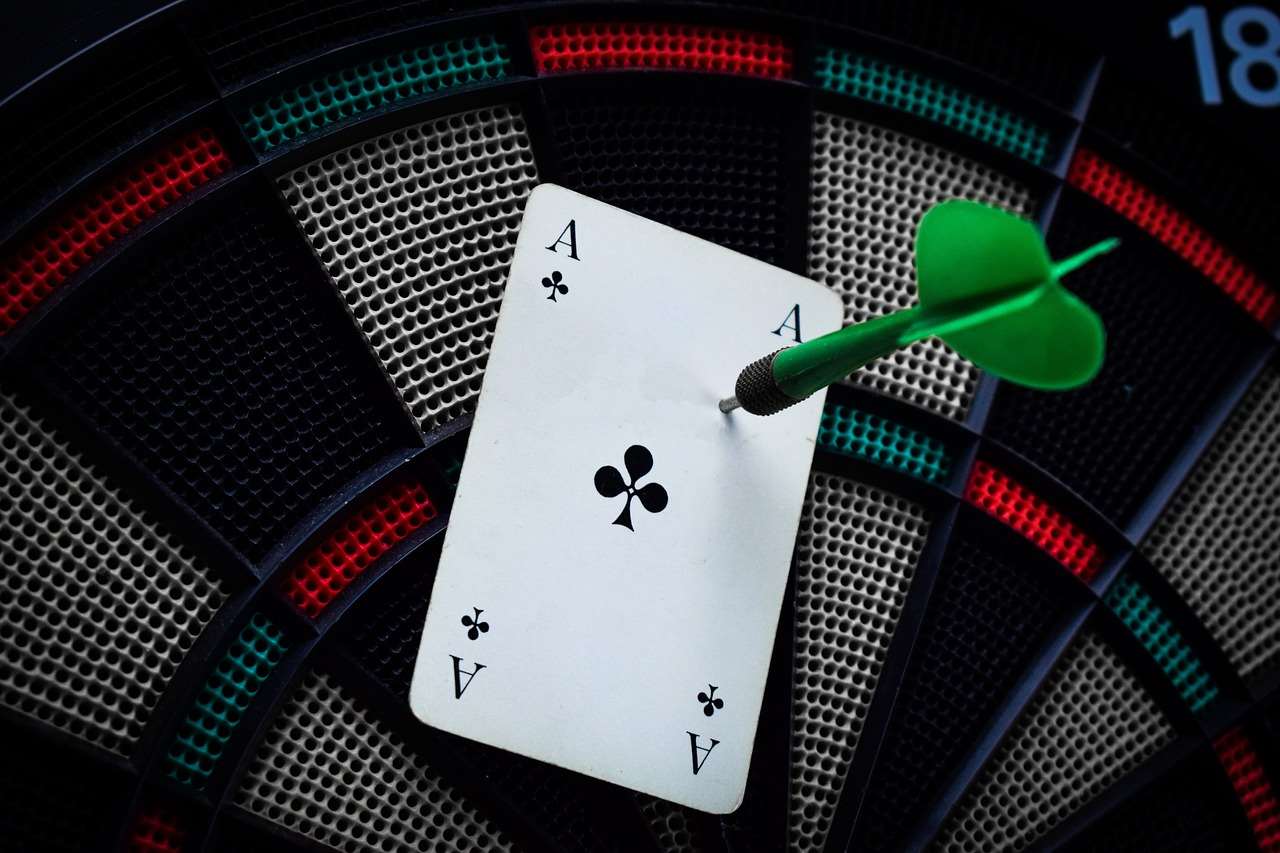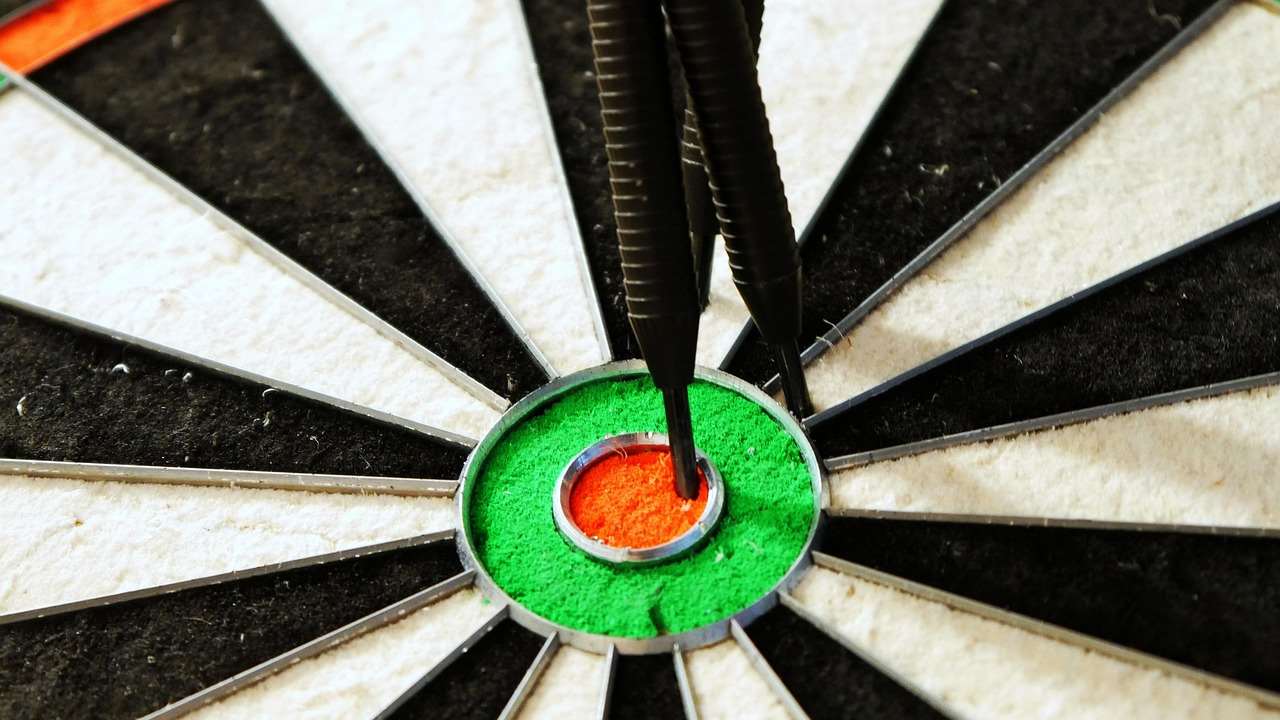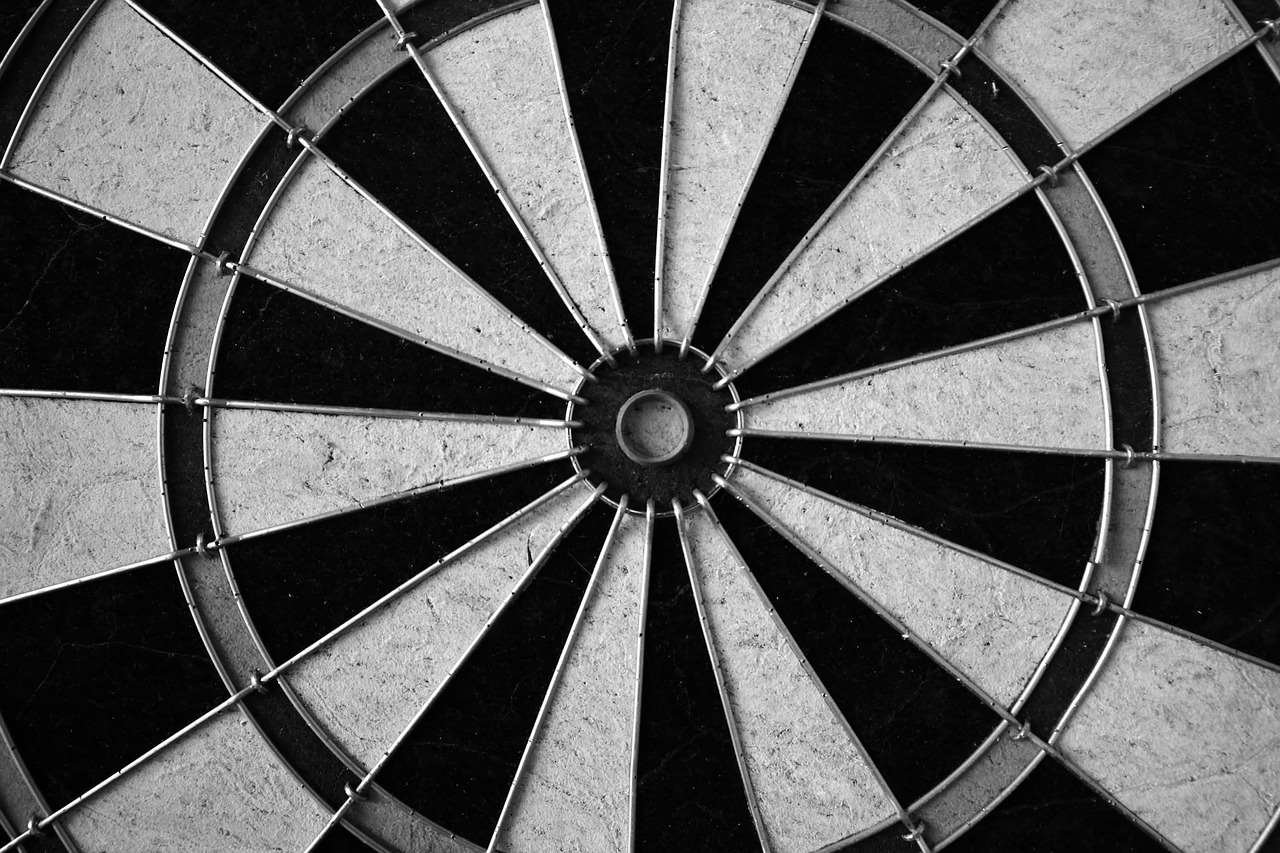Understanding dart point length and balance is crucial for achieving consistent accuracy and improving your dart game. This article will explain the impact of point length and balance on your throw, offering practical advice and tips to optimize your darts for peak performance. We’ll also explore related aspects of dart setup and maintenance to help you become a more skilled player.
⚠️ Still Using Pen & Paper (or a Chalkboard)?! ⚠️
Step into the future! The Dart Counter App handles all the scoring, suggests checkouts, and tracks your stats automatically. It's easier than you think!
Try the Smart Dart Counter App FREE!Ready for an upgrade? Click above!
Choosing the right dart points involves understanding how they affect your throw. Different point lengths and styles influence the overall balance and weight distribution, directly impacting your ability to hit your target. Dart point length and balance are interconnected aspects that should be carefully considered together.
Dart Point Length: Finding the Sweet Spot
Dart point length significantly influences the overall balance of your dart. Longer points generally lead to a more front-heavy dart, which can offer benefits in terms of stability during flight. However, an excessively long point can make the dart feel awkward in your hand and potentially disrupt your throw. Shorter points provide a more rear-weighted feel, allowing for quicker releases and a potentially smoother trajectory. The best length is highly subjective and depends on your throwing style, grip, and personal preferences. Experimenting with different point lengths is crucial to find the perfect fit for your game.
Consider your grip. If you have a strong barrel grip, a longer point may be less effective. Conversely, if you have a lighter grip, a longer point might offer the stability you need for more controlled throws.

Many players find that a medium-length point offers a good balance between stability and maneuverability. This is often a good starting point for experimentation. However, the ideal dart point length and balance is ultimately a matter of personal preference and should be determined through trial and error.
Experimentation is Key
Don’t be afraid to experiment with different point lengths. Many dart manufacturers offer a range of point lengths, and you can easily replace your existing points to see what works best for you. Start by making small adjustments – switching to points only slightly longer or shorter than your current ones. Keep track of your scores and overall accuracy to see if these small changes have any noticeable impact on your game.
- Start with a point length that feels comfortable and natural in your hand.
- Gradually increase or decrease the length, keeping a record of your performance at each stage.
- Pay attention not just to your scoring accuracy, but also to the overall feel of the dart in your hand.
Remember to always maintain your darts gear lifespan to ensure your experiments are accurate.
The Role of Balance in Dart Throwing
The balance of a dart, closely tied to dart point length, dramatically impacts its flight path. A well-balanced dart flies straighter and more consistently, leading to improved accuracy. An unbalanced dart, on the other hand, will wobble and veer off course, resulting in inconsistent scoring. Understanding the concept of center of gravity is crucial when considering dart balance.
The center of gravity (CG) is the point at which the dart’s weight is evenly distributed. In an ideally balanced dart, the CG should be near the center of the barrel. However, the placement of the CG can be influenced by several factors, including the barrel’s weight distribution, the point’s length, and even the weight of the flights.

Many professional dart players meticulously adjust the balance of their darts to meet their individual needs and preferences. This can involve adjusting the placement of weights within the barrel or selecting specific components like shafts and flights to influence the overall balance.
Understanding Different Dart Point Styles
Beyond dart point length and balance, the *style* of the dart point also matters. Different point styles affect how the dart penetrates the dartboard and how it interacts with the surrounding material. Some common point styles include:
- Standard Points: These are the most common type, offering a balance of penetration and durability.
- Soft Tip Points: Designed for soft-tip dartboards, these points are typically shorter and blunter.
- Steel Tip Points: For steel-tip dartboards, these points need to be exceptionally sharp and strong to withstand the impact.
The choice of point style will largely depend on the type of dartboard you are using. However, it is important to select a point that has a suitable length and that balances well with your entire dart setup. You should always adhere to the manufacturer’s guidelines to ensure a safe and effective throwing experience.
Tips for Optimizing Dart Point Length and Balance
Here are some practical tips to optimize your dart point length and balance for improved performance:
- Experiment with different point lengths: As mentioned before, finding the right length requires trial and error.
- Consider your throwing style: Your grip and throwing technique influence the ideal dart balance.
- Pay attention to flight consistency: Observe how your darts fly with different points – look for any wobbling or inconsistencies.
- Use a dart balance tool: Several tools help measure the center of gravity. While not essential for casual players, this is useful for advanced players or those looking for very fine-tuned balance.
- Maintain your darts: Regularly cleaning and maintaining your darts, including the points, is crucial for maintaining their performance. For example, learning to effectively clean dart barrels is vital.
Regular darts gear maintenance is as important as choosing the right components. Neglecting maintenance will undoubtedly impact accuracy and your overall game.
The Impact of Dart Shafts and Flights
While we’ve focused on dart point length and balance, it’s essential to remember that other components, such as shafts and flights, also influence the overall balance and flight path of your dart. Choosing the right shafts and flights can significantly complement your chosen point length and contribute to a more consistent and accurate throw.
Consider the weight and length of your shafts. Heavier shafts can make the dart feel more front-heavy, while lighter shafts can create a more rear-weighted feel. Similarly, the size and shape of your flights affect aerodynamics. Larger flights provide more stability but can slow down the dart slightly, whereas smaller flights offer less stability but are faster.
Understanding how all the components work together is crucial. For instance, you might choose a longer point but counteract its front-heavy effect by using lighter shafts. Again, experimenting and finding the right combination for your style is key.

Don’t underestimate the influence of Darts Equipment Maintenance Customization. A properly maintained and customized setup drastically improves consistency and accuracy.
Advanced Techniques and Considerations
For serious players, fine-tuning dart point length and balance can involve advanced techniques. This might include using weighted barrels, or even custom-made components to achieve a highly specific CG. This level of customization is generally unnecessary for casual players, but it highlights the importance of considering the impact of all dart components on your throw.
Understanding your own throwing style and physical capabilities is essential for finding the perfect dart setup. Factors such as your grip, throwing motion, and even your hand size will influence your ideal dart point length and balance. Don’t be afraid to try different things to see what works best for you.
Investing in quality darts is a great way to ensure a more consistent and enjoyable experience. Lower-quality darts may have inconsistent weight distribution or manufacturing flaws that affect balance.

Remember that achieving optimal dart performance is an ongoing process. Regularly reviewing your equipment and making adjustments as needed is essential for continuous improvement. Consider exploring resources and online communities to exchange tips and learn from experienced players. It’s also wise to occasionally consider darts gear lifespan lessons.
Conclusion
Mastering dart point length and balance is a journey, not a destination. By understanding the impact of point length on your throw, and by carefully considering the overall balance of your dart, you can significantly improve your accuracy and consistency. Remember to experiment with different lengths and styles, paying close attention to how your darts perform. This careful consideration, combined with regular maintenance and a commitment to practice, will help you unlock your full potential in the exciting world of darts.
Start experimenting today! Choose a few different point lengths and styles, and see how they impact your game. You might be surprised by how much of a difference a small adjustment can make. Don’t forget to regularly maintain your equipment for optimal performance and longevity. Happy throwing!
Hi, I’m Dieter, and I created Dartcounter (Dartcounterapp.com). My motivation wasn’t being a darts expert – quite the opposite! When I first started playing, I loved the game but found keeping accurate scores and tracking stats difficult and distracting.
I figured I couldn’t be the only one struggling with this. So, I decided to build a solution: an easy-to-use application that everyone, no matter their experience level, could use to manage scoring effortlessly.
My goal for Dartcounter was simple: let the app handle the numbers – the scoring, the averages, the stats, even checkout suggestions – so players could focus purely on their throw and enjoying the game. It began as a way to solve my own beginner’s problem, and I’m thrilled it has grown into a helpful tool for the wider darts community.